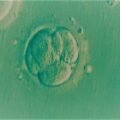The crew of the International Space Station (ISS) fired maneuvering rockets last week to avoid being struck by a chunk of a previously destroyed Chinese weather satellite. Smashed to bits by an anti-satellite missile test nearly fifteen years earlier, the piece of debris was projected to come close enough to the ISS that the National Aeronautics & Space Administration (NASA) and the Russian Space Agency Roscosmos (who coordinated the maneuver) decided to execute the move.
“It just makes sense to go ahead and do this burn and put this behind us so we can ensure the safety of the crew,” said Joel Montalbano, NASA’s space station manager, at a press conference on Tuesday, according to the New York Times.
BACKGROUND: INTERNATIONAL SPACE STATION COLLISION AVOIDANCE PROCEDURES
In May of this year NASA released a report outlining the dangers faced from debris colliding with human spacecraft.
“More than 27,000 pieces of orbital debris, or “space junk,” are tracked by the Department of Defense’s global Space Surveillance Network (SSN) sensors,” the report explains. “Much more debris — too small to be tracked, but large enough to threaten human spaceflight and robotic missions — exists in the near-Earth space environment.”
That same report explains how the bulk of that debris is traveling at or near orbit speed, which is around 17,500 miles per hour, meaning even a collision with a tiny fleck of paint can be deadly.
ANALYSIS: FIRING THE ROCKETS
According to the Conversation, the maneuver lasted for just over six minutes, and increased the station’s orbit by 1.2 kilometers (or about 0.7 miles)
News of the approaching fragment was first shared on the Roscosmos twitter account. That report also was the first to identify China’s Fengyun-1C weather satellite as the source of the debris. A 2007 story from NPR covering that satellite’s intentional destruction notes that at the time world governments were outraged by China testing their anti-satellite missile for exactly this reason.
“This satellite was maybe 3/4 of a ton in mass,” said David Wright, a physicist with the Union of Concerned Scientists in the NPR piece. “And it would have thrown off about 2 million pieces that were bigger than a millimeter in size. Sounds pretty small but at speed going a millimeter object could be deadly.”
In that same piece, Wright says that this single event likely doubled the amount of space debris at its particular altitude.
OUTLOOK: NOT THE FIRST ISS MOVE AND LIKELY NOT THE LAST
According to the New York Times report this was the 29th time that the space station has had to move to avoid space debris. Given the ever increasing amount of manmade objects being launched into space, it is almost surely not the last.
Although NASA has not released any official footage of the maneuver, back in 2016, Business Insider put out a video showing how this whole process takes place. It is definitely worth a watch.
Follow and connect with author Christopher Plain on Twitter: @plain_fiction
